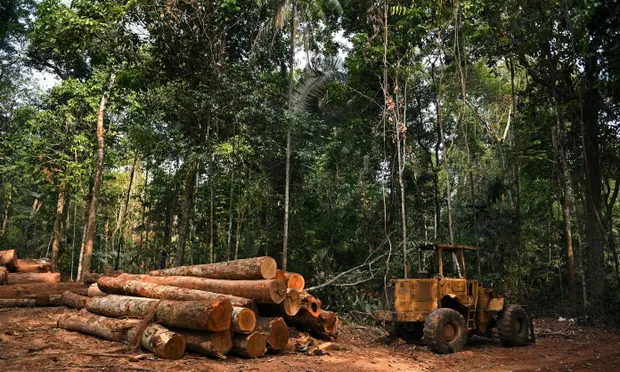The report, released Monday, analyzed nearly 500,000 rows of customs data and found that brands such as Coach, LVMH, Prada, H&M, Zara, Adidas, Nike, New Balance, Teva, UGG and Fendi have multiple connections to an industry that props up Amazon deforestation.
More than 50 brands have multiple supply-chain links to the largest Brazilian leather exporter, JBS, which is known to engage in Amazon deforestation. JBS recently made a commitment to achieve zero deforestation across its global supply chain by 2035, something environmental groups have called insufficient.
The study was conducted by Stand.earth, a supply chain research firm. The findings are surprising, in part because a number of the brands surveyed have recently announced policies to untangle themselves from actors along the supply chain that contribute to deforestation.
“With a third of companies surveyed having some kind of policy in place, [you’d expect] that would have an impact on deforestation,” said Greg Higgs, one of the researchers involved in the report. “The rate of deforestation is increasing, so the policies have no material effect.”
The researchers hope to one day expand to other industries that rely heavily on leather, like the automotive sector.
In 2019 and 2020, Brazil faced criticism from world leaders for not doing more to protect the forest from raging wildfires. Deforestation in the critical ecosystem continues at an alarming rate. Research has shown that the cattle industry is the single largest driver of deforestation of the Amazon rainforest and the fashion industry is animportant cog in the leather exportation machine.
In fact, projections show that in order to keep supplying consumers with wallets, handbags and shoes, the fashion industry must slaughter 430m cows annually by 2025.
Their analysis does not prove a direct link between each fashion brand and Amazon deforestation; instead, researchers found connections that increase the probability of any individual garment coming from cattle ranching in the Amazon, an industry described as the No 1 culprit of deforestation in the area.
The report identified fashion brands that participate in the Leather Working Group or other voluntary commitments, but highlight that the Leather Working Group evaluates tanneries only on their ability to trace leather back to slaughterhouses, not back to farms.
“The goal is to develop a clear plan [for the fashion industry] to close the loopholes,” said Jungwon Kim, vice-president of strategy of Slow Factory, the climate justice non-profit that collaborated on the report.
Of the 84 companies analyzed by the report, 23 had explicit policies on deforestation. The researchers believe those 23 companies are “likely” violating their own policies, based on their findings. The fashion house LVMH, for example, was found to have a high risk of connections to Amazon deforestation – despite the fact that earlier this year the brand pledged to protect the vulnerable region with Unesco.
Sônia Guajajara, executive coordinator of the Brazilian Indigenous Peoples’ Alliance (APIB), said brands have “the moral responsibility, the influence and the economic resources” to stop working with suppliers contributing to deforestation in the Amazon today, “not in 10 years, not in 2025”.
The effect of recent wildfires in the Amazon has had devastating consequences for Indigenous groups, who say president Jair Bolsonaro forcibly removed Indigenous peoples to make way for agriculture, mining and other development activities.
Angeline Robertson, an investigative researcher who worked on the study, told the Guardian she hopes the fashion industry will take cues from their analysis and “work in their own self-interest”.
“In this time of climate emergency, if the fashion industry wants to be relevant, this is the opportunity,” she said.
Céline Semaan, chief executive and co-founder of Slow Factory, said brands should not use this as an opportunity to contribute to deforestation elsewhere, such as Guatemala or Mexico, but invest in and explore alternatives that are not extractive.
With lab-grown alternatives on the rise, a future where your favorite bag or sneakers don’t come at the expense of the Amazon rainforest is possible.
“At the end of the day, we have to find other solutions and other alternative leathers that are not animal-based and that are not plastic-based,” said Semaan. “With the resources that fashion companies have, there’s really no excuse.”
